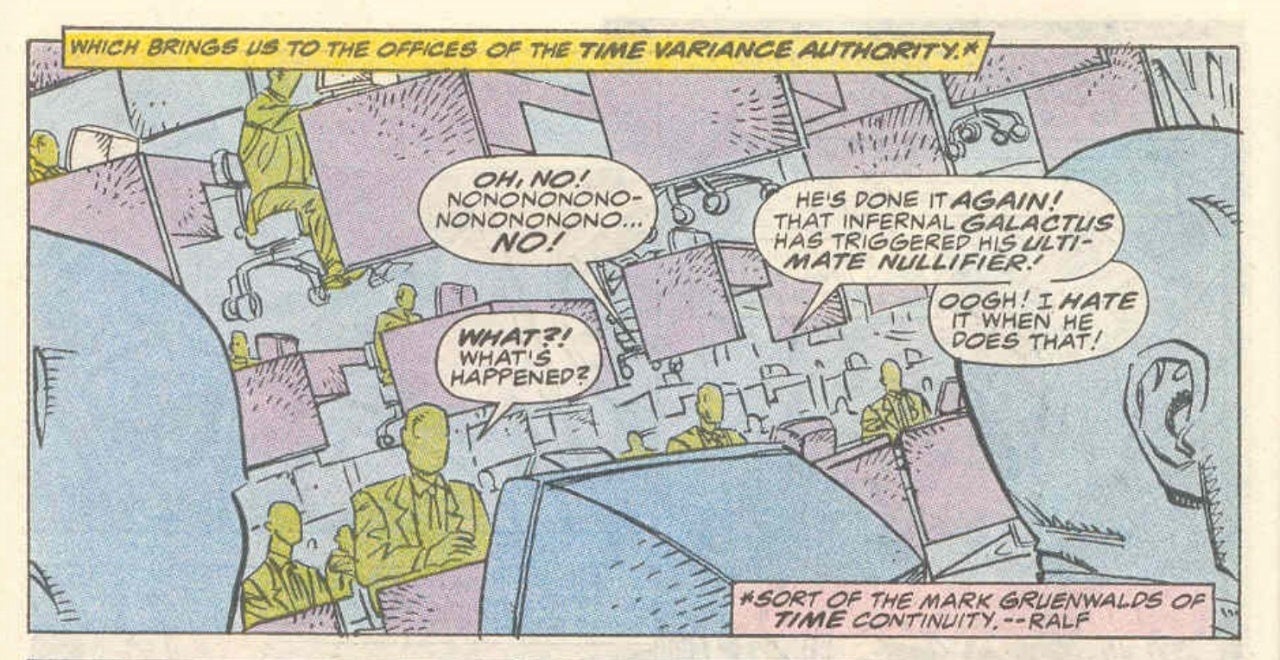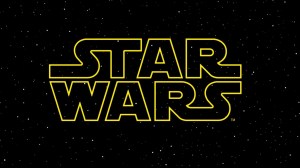As we get closer to the premiere of Disney+‘s Loki series, fans have only been speculating more and more about what ramifications it will have in the Marvel Cinematic Universe. Part of that has revolved around the new elements of Marvel Comics lore that the series is confirmed or long-rumored to introduce, ranging from the Time Variance Agency to the characters within it. Among them is Mobius M. Mobius (Owen Wilson), an agent of the TVA who appears to partner up with Loki throughout much of the series’ six-episode run. While Mobius has his own eclectic history within the Marvel universe, the very nature of his creation boasts an interesting origin story all its own — namely, because Mobius long regarded to be inspired by iconic Marvel writer and editor Mark Gruenwald.
Videos by ComicBook.com
Born in Oshkosh, Wisconsin in 1953, Gruenwald initially got his start in the comics industry as a fan, contributing articles about comics history for fanzines such as The Amazing World of DC Comics. In 1977, Gruenwald began self-publishing Omniverse, a fanzine that would break down all of the alternate-universe continuities in comics. Gruenwald got hired by Marvel the very next year, initially serving as an assistant editor on titles such as Spider-Woman, What If?, and Thor, co-writing the famous Tales of Asgard story on the latter title. He was then promoted to editor in 1982, the same year he co-wrote the publisher’s first limited series, Marvel Super Hero Contest of Champions. Gruenwald would go on to also use his prolific knowledge of Marvel Comics history to create the Official Handbook of the Marvel Universe, a title that would provide an encyclopedic look at the important elements of the fictional universe.
Gruenwald might be best known for his prolific ten-year run writing Captain America, which saw him recontextualize the patriotic character for the modern world of the ’80s and ’90s. The run saw the creation of several now-iconic Captain America villains, including Crossbones, Flag-Smasher, and John Walker/U.S. Agent, who Gruenwald briefly had suit up as Captain America himself following Steve Rogers’ retirement. From 1985 to 1986, Gruenwald also penned a 12-issue maxiseries for the Squadron Supreme, which saw the group of alternate-universe heroes (loosely inspired by DC’s Justice League of America) trying to turn their war-torn Earth into a utopia. His other lengthy runs on titles include a nearly sixty-issue take on Quasar, multiple key issues of The Avengers, and a Hawkeye miniseries. In 1987, Gruenwald was then promoted to an executive editor at Marvel, with a specific focus on maintaining the franchise’s continuity.
While the Time Variance Authority was created by Walt Simonson and Sal Buscema in 1986’s Thor #372, Mobius wouldn’t make his debut until years later, in 1991’s Fantastic Four #353. Created entirely by Simonson, Mobius debuted as the (cloned) face behind the middle management of the TVA, with a seemingly endless number of clones of himself working for the organization. Not only did Mobius bare an aesthetic similarity to Gruenwald — down to the prominent black mustache — but his fixation on maintaining the continuity was seen as an homage to Gruenwald’s own maintaining of the Marvel canon. 1991’s Fantastic Four Annual #24 confirmed the connection between Mobius and Gruenwald, with an editor’s note from Ralph Macchio referring to the TVA as “sort of the Mark Gruenwalds of Time Continuity.”

Gruenwald continued to contribute to Marvel regularly up until his sudden passing in 1996, due to a heart attack stemming from a congenital heart defect. Gruenwald’s passing caught the attention of the comic community for multiple levels — first for the unexpected circumstances surrounding his death, as many believed that he was pulling a prank on them. There also were Gruenwald’s unique final wishes within his will, as he had requested to be cremated and have his ashes mixed into the print run of a comic. The book in question ultimately ended up being the first trade paperback collection of Squadron Supreme, which was published in 1997.
“The whole ash thing was a complete fluke when we wrote up our wills in 1992; he put in a direction to have me cremate him and put his ashes into a comic book,” Cat Schuller Gruenwald, Gruenwald’s widow, wrote in a 2016 op-ed for 13th Dimension. “Yeah, yeah…that will never happen, I thought to myself. Little did I know, four years later I’d be doing just that. And Marvel cooperated and we did it! I drove up to the plant in Connecticut and stirred the ashes into the ink that was used for Squadron Supreme, his best-selling graphic novel. That all happened between 1996-97.”
“The ashes are symbolic and since he was always playing with alternate realties and cosmic portals and parallel universes,” Schuller Gruenwald continued. “It would make sense that he would get a kick out of toying with people’s sentiments and literally wanting them to know he was a fan turned pro, wanted to do something no one had ever done before in comics.”
Gruenwald’s colorful legacy as a creator and as a Marvel fan only makes the circumstances surrounding Mobius’ live-action debut in Loki all the more endearing. Not only does the series get to turn Gruenwald’s unintentional character proxy into a household name, but the series itself gets to champion lesser-known aspects — and even some alternate interpretations of — of Marvel continuity, not unlike Gruenwald’s work across decades at the publisher.
Loki debuts on Disney+ beginning Wednesday, June 9th.
Want to learn more about the latest Marvel Studios series? Check back on ComicBook CRAM every day leading up to the premiere of Loki, and click here for even more articles and videos to find out everything you need to know about the new show!
If you haven’t signed up for Disney+ yet, you can try it out here. Note: If you purchase one of the awesome, independently chosen products featured here, we may earn a small commission from the retailer. Thank you for your support.








